
Guns N’ Roses — Appetite for Destruction
- intothewellsabyss
- Jul 20, 2023
- 26 min read
Updated: Jul 21, 2023
𝐅𝐑𝐎𝐌 𝐓𝐇𝐄 𝐂𝐑𝐘𝐏𝐓𝐒 - 𝐂𝐄𝐋𝐄𝐁𝐑𝐀𝐓𝐈𝐍𝐆 𝐏𝐀𝐒𝐓 𝐀𝐋𝐁𝐔𝐌 𝐑𝐄𝐋𝐄𝐀𝐒𝐄𝐒 𝐢𝐧 𝐭𝐡𝐞 𝐇𝐈𝐒𝐓𝐎𝐑𝐘 𝐨𝐟 𝐇𝐀𝐑𝐃 𝐑𝐎𝐂𝐊 & 𝐇𝐄𝐀𝐕𝐘 𝐌𝐄𝐓𝐀𝐋…
36 years ago, the raw, crude, fearless and unadulterated release that would eventually land G N’ R in the limelight was released!
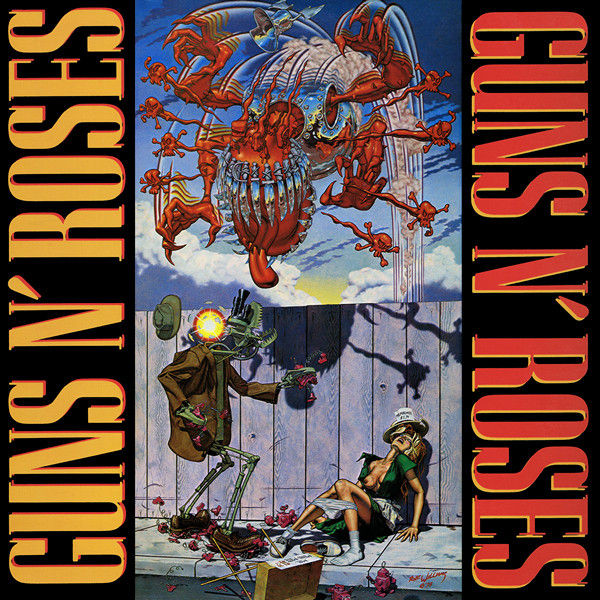
On July 21st in 1987, Guns N' Roses released their debut full-length studio album, “Appetite for Destruction” via Geffen Records.
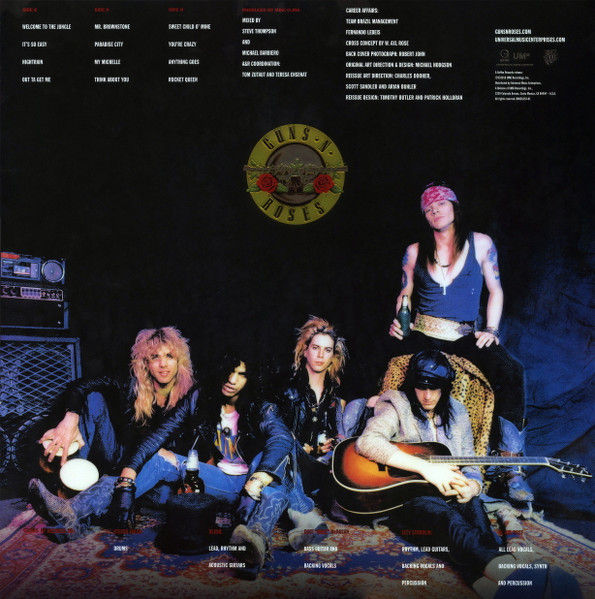
The album was released to little mainstream attention in 1987. It was not until the following year that “Appetite for Destruction” became a commercial success, after the band had toured and received significant airplay with the singles "Welcome to the Jungle", "Paradise City" and "Sweet Child o' Mine".
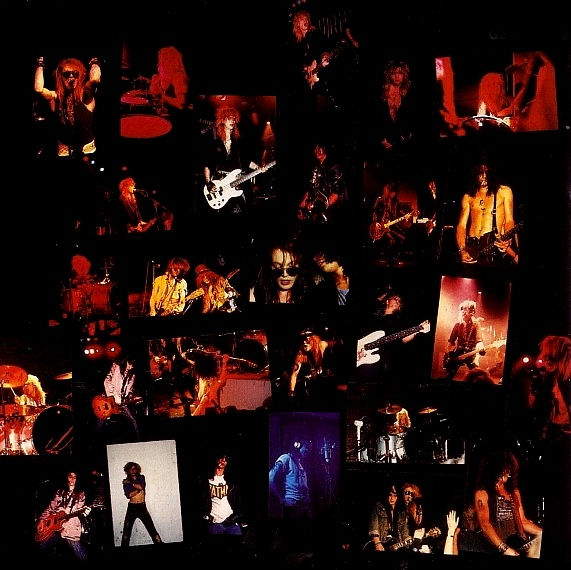
The album peaked at No. 1 on the US Billboard 200 and became the seventh best-selling album of all time in the United States, as well as the best-selling debut album. With over 30 million copies sold worldwide, it is also one of the best-selling albums of all time.
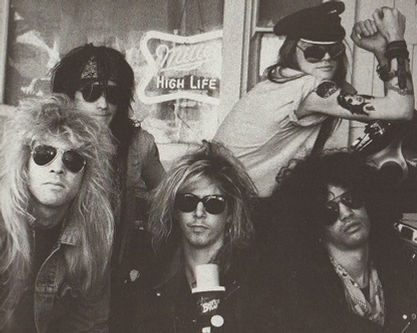
Although critics were originally ambivalent toward the album, “Appetite for Destruction” has received retrospective acclaim and has been viewed as one of the greatest albums of all time. In 2018, it was re-released as a remastered box set to similar acclaim.
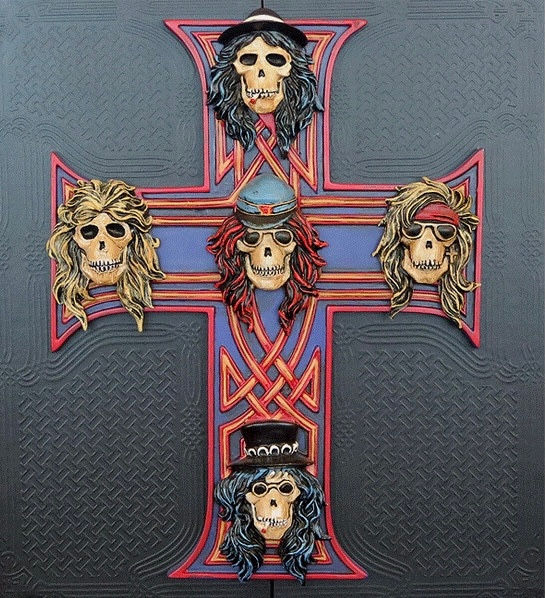
The Wells Perspective:
What can I say about “Appetite for Destruction” that hasn’t already been said? Some people loved it and some people hated it! I am of the former! The music was primitive, raw, loud and in your face! The band… they were raucous, lewd, rude, wild and downright crazy! And I loved every damned moment! They were new and fresh in a climate of clones and wannabes! Yet, somehow they felt vaguely familiar, like an old acquaintance. They had a Punk edge to them that most of the “Glam Metal” or “Hard Rock” bands from the Sunset Strip did not have. And, I am an old fan of Punk, so this struck a nerve with me! As a young, angry and impressionable 14 year old, they were exactly the cure for what ailed me! Their “Fuck the World” mentality was my motto, and I waived that banner proudly! Hell, I waited up to the late night hours just to watch the premiere of the video for “Welcome to the Jungle” on MTV. I had every shirt available… hats and back patches, and I drew their logo all over my school folders! Last, but definitely not least, was that my bedroom was more than 75% covered with Guns N’ Fuckin’ Roses posters (including the one below, which was dead center of the Gn’R shrine)! Many people like to jump on the hate bandwagon these days, but the album sales don’t lie… and besides, like the words from “Rocket Queen” says; “I might be a little young, but honey I ain’t naive”… well, the young part, not so much anymore [ha,ha], but you get the picture!
So, climb aboard the "Nightrain" and take a ride down memory lane, back to a jungle called "Paradise City"! — E.N. Wells

Background:
Guns N' Roses' first recordings were for a planned EP in March 1985, shortly after forming, with "Don't Cry", a cover of "Heartbreak Hotel", "Think About You" and "Anything Goes".

(𝚃𝚛𝚊𝚌𝚒𝚒 𝙶𝚞𝚗𝚜 𝚊𝚗𝚍 𝙰𝚡𝚕 𝚁𝚘𝚜𝚎)
However, plans for the release fell through, as original guitarist Tracii Guns left the band, being replaced by Slash. Shortly afterward, the classic lineup of Axl Rose, Duff McKagan, Slash, Steven Adler and Izzy Stradlin was finalized.
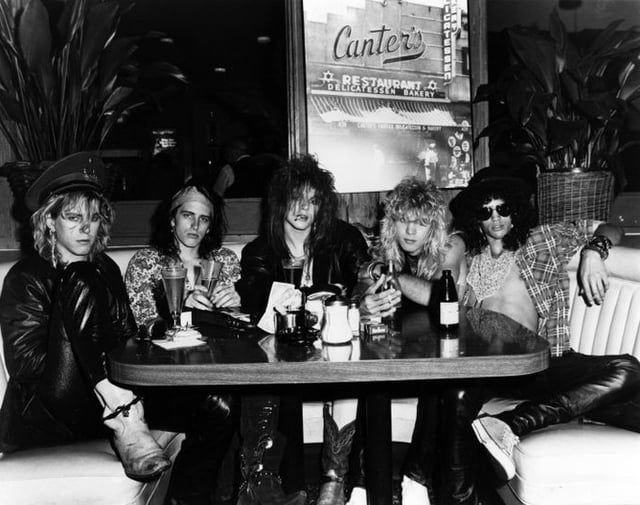
After heavy touring of the Los Angeles club scene, the group signed with Geffen Records in March 1986.
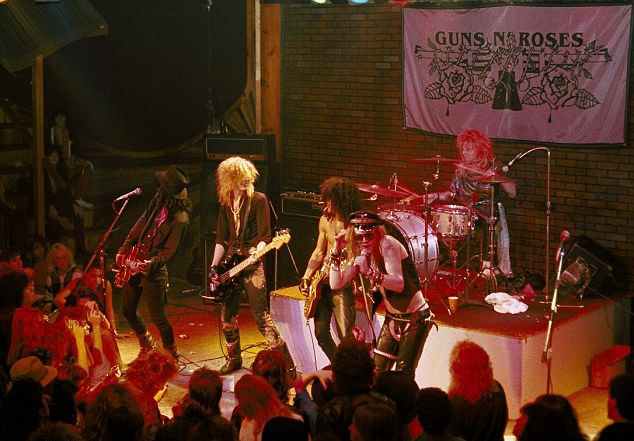
(𝙶𝚞𝚗𝚜 𝙽‘ 𝚁𝚘𝚜𝚎𝚜 𝚕𝚒𝚟𝚎, 𝚌𝚒𝚛𝚌𝚊 𝟷𝟿𝟾𝟼)
In December of that year, the group released the four-song EP “Live ?!*@ Like a Suicide”, designed to keep interest in the band alive while the group withdrew from the club scene to work in the studio.
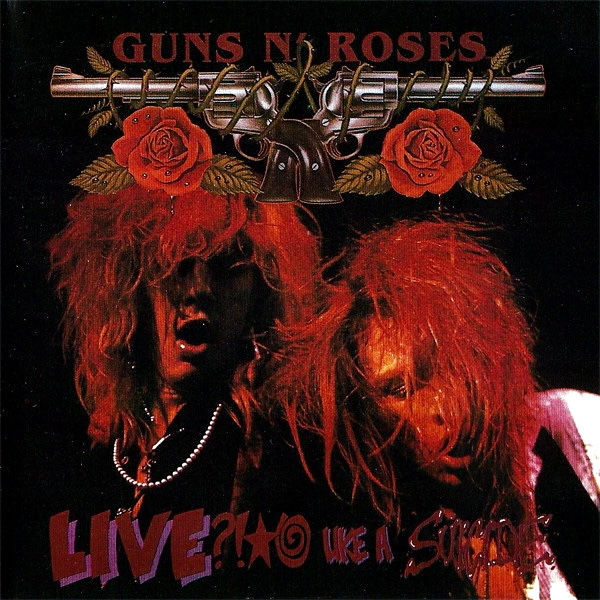
The EP release was designed to soothe the label, which believed the band did not have enough songs to record a full-length album.

Writing & Recording “Appetite For Destruction”:
Rose stated that many of the songs on the album were written while the band was performing on the Los Angeles club circuit, and a number of songs that were ultimately featured on later Guns N' Roses albums were considered for “Appetite for Destruction”, such as "Back Off Bitch", "You Could Be Mine", "November Rain" and "Don't Cry". It is said that the reason for not putting "November Rain" on “Appetite for Destruction” was that the band had already agreed to put "Sweet Child 'O Mine" on the album and thus already had a "ballad" on the track list.
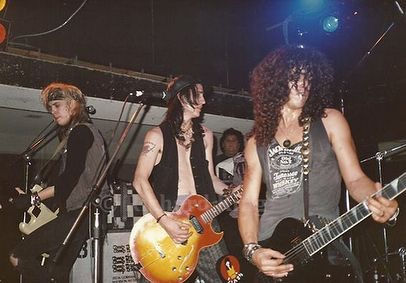
Producer Spencer Proffer was hired to record "Nightrain" and "Sweet Child O' Mine" to test his chemistry with the band. The band eventually recorded nine songs with Proffer during these sessions, including "Heartbreak Hotel", "Don't Cry", "Welcome to the Jungle" and "Shadow of Your Love".

In mid- to late 1986, the band recorded demos with Nazareth guitarist Manny Charlton, which were released in 2018. The band initially considered Paul Stanley of KISS to produce, but he was rejected after he wanted to change Adler's drum set more than Adler wanted. Robert John "Mutt" Lange was also considered, but the label didn't want to spend the extra money on a famous producer. Ultimately, Mike Clink (who had produced several Triumph records) was chosen, and the group recorded "Shadow of Your Love" first with Clink as a test.

After some weeks of rehearsal, the band entered Daryl Dragon's Rumbo Recorders in January 1987. Two weeks were spent recording basic tracks, with Clink splicing together the best takes with his razor blade. Clink worked eighteen-hour days for the next month, with Slash overdubbing in the afternoon and evening, and Rose performing vocals.

Slash struggled to find a guitar sound before coming up with a Gibson Les Paul copy equipped with Seymour Duncan Alnico II pickups and plugged into a Marshall amplifier. He spent hours with Clink paring down and structuring his solos.

The total budget for the album was about $370,000. According to drummer Steven Adler, the percussion was done in just six days, but Rose's vocals took much longer as he insisted on doing them one line at a time, in a perfectionism that drove the rest of the band away from the studio as he worked. Final overdubs and mixing were done at Mediasound Studios, and mastering at Sterling Sound, New York City.
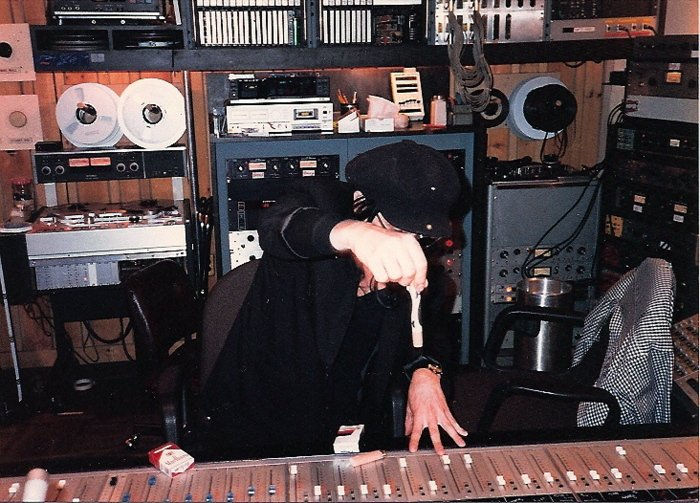
Many of the songs on “Appetite For Destruction” began as solo tracks that individual band members wrote separate from the band, only to be completed later.
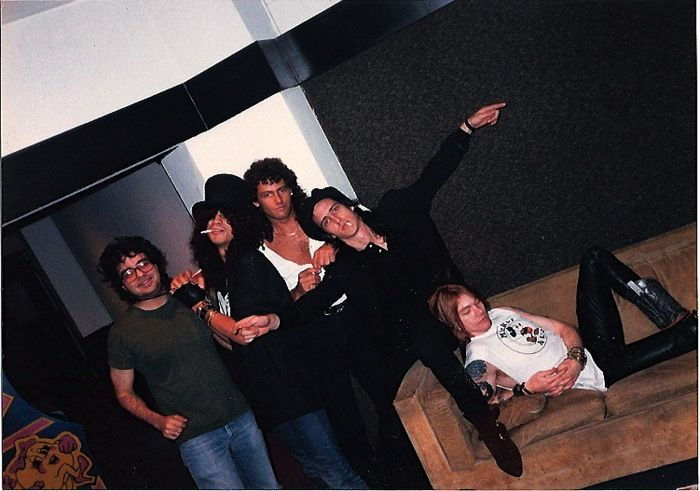
These songs include "It's So Easy" (Duff McKagan) and "Think About You" (Izzy Stradlin). "Rocket Queen" was an unfinished Slash/McKagan/Adler song that was written from their earlier band Road Crew, whereas "Anything Goes", written by Hollywood Rose and included in their compilation album “The Roots of Guns N' Roses”, was later re-written for "Appetite".
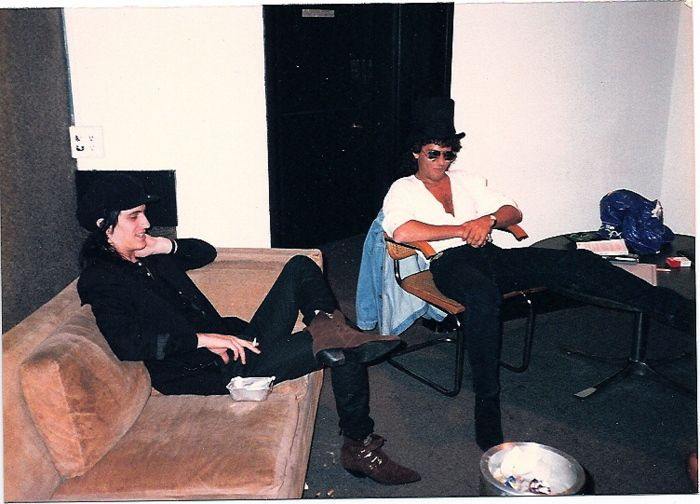
Most of the songs reflect the band's personal experiences and daily life, such as "Welcome to the Jungle", some of the lyrics of which Rose wrote after he encountered a man in New York shortly after arriving there from Indiana in 1980, and "Mr. Brownstone", which is about the band's problems with heroin.
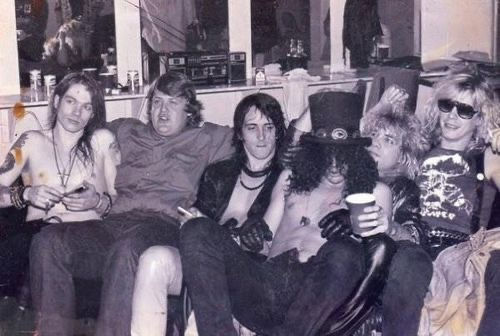
Lyrics to some of the songs focus on the band members' younger years, like "Out ta Get Me", which focuses on lead singer Axl Rose's constant trouble with the law as a youth in Indiana.
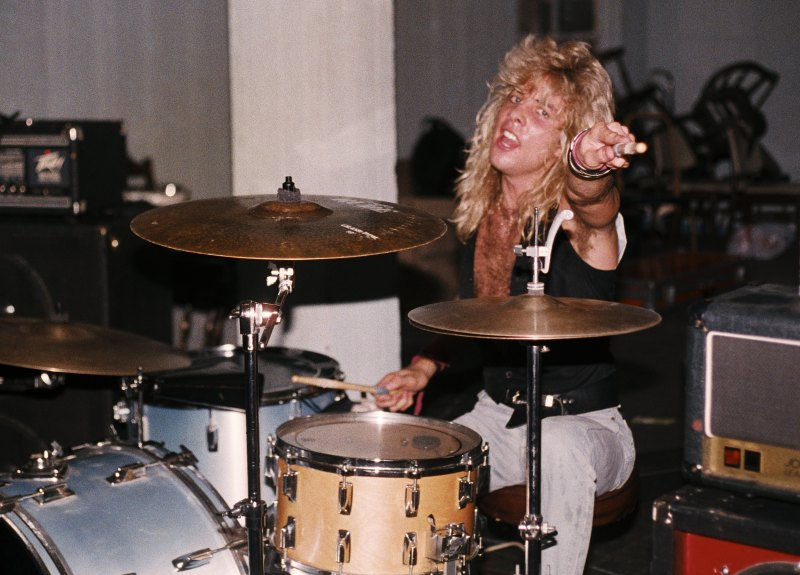
Album Art & Layout:
The album's original cover art was based on Robert Williams' painting “Appetite for Destruction”. It depicted a robotic rapist about to be punished by a metal avenger.

After several music retailers refused to stock the album, the label compromised and put the controversial cover art inside, replacing it with an image depicting a Celtic cross and skulls of the five band members with (designed by Billy White Jr., originally as a tattoo), each skull representing one member of the band: Izzy Stradlin, top skull; Steven Adler, left skull; Axl Rose, center skull; Duff McKagan, right skull; and Slash, bottom skull.
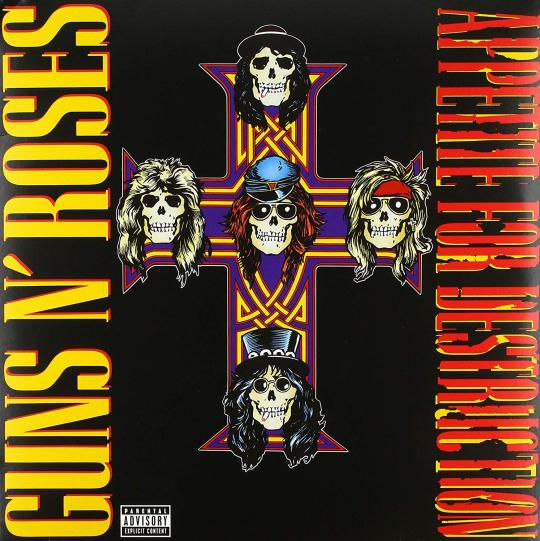
In a 2016 interview, Billy White Jr. explained, "The cross and skulls that looked like the band was Axl's idea, the rest was me. The knot work in the cross was a reference to Thin Lizzy, a band Axl and I both loved."

The photographs used for the back of the album and liner notes were taken by Robert John, Marc Canter, Jack Lue, Leonard McCardie, and Greg Freeman. The original cover was supposed to be on the 2008 vinyl reissue, though the record label replaced it with the "Skulls" art at the last minute.

The band stated the artwork is "a symbolic social statement, with the robot representing the industrial system that's raping and polluting our environment." In albums which were issued on double sided media (vinyl records and audio cassettes) the two sides were not conventionally labeled "A" and "B", but "G" and "R".
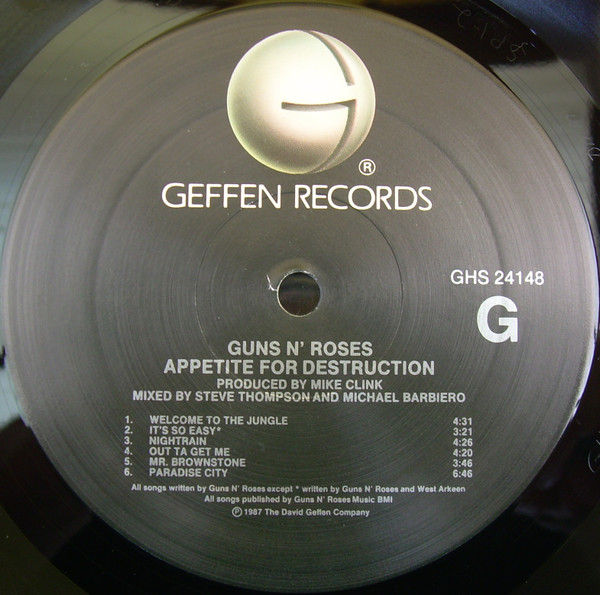
Tracks 1–6 which compose side "G" all deal with drugs and hard life in the big city ("Guns" side). The remaining tracks, which compose side "R", all deal with love, sex and relationships ("Roses" side).
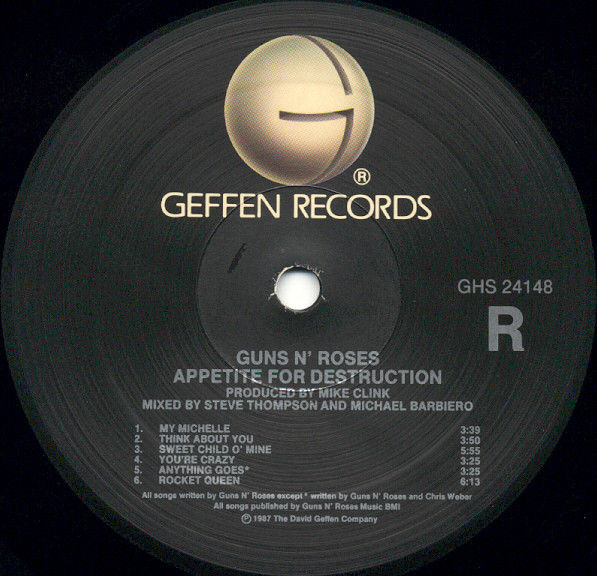
In an interview with That Metal Show in 2011, Rose stated his original idea for the cover art was to be the photo of the Space Shuttle Challenger exploding, which was on the cover of Time magazine in 1986, but Geffen refused it saying it was "in bad taste".
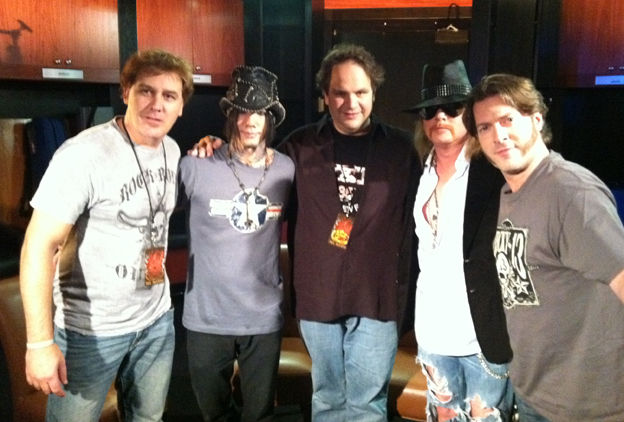
Marketing & Sales:
“Appetite for Destruction” was released, receiving little notice from American press and radio, apart from some airplay in California. Music journalist Stephen Davis later attributed this to competing Rock music in the mainstream at the time, including Aerosmith's comeback hit “Permanent Vacation”, Def Leppard's presence on radio with their “Hysteria” album, and the dominance of U2's spiritual Rock on MTV's prime-time viewership.

(𝙶𝚞𝚗𝚜 𝙽‘ 𝚁𝚘𝚜𝚎𝚜 𝚙𝚛𝚘𝚖𝚘 𝚔𝚒𝚝)
In the week of August 29, 1987, “Appetite for Destruction” debuted at No. 182 on the Billboard 200, but several months after its release had only sold 200,000 copies, and Geffen was "walking away" from the record.

Radio stations originally did not want to play the band's single "Welcome to the Jungle", nor had MTV wanted to air its music video. However, after several months of lobbying the network, Geffen general manager Al Coury convinced MTV to play the video just once a night for three nights.

"Welcome to the Jungle" became the most requested video on MTV's network, a success that Coury pitched to radio stations while sending them promo copies of "Welcome to the Jungle", "Paradise City", and "Sweet Child O' Mine".

With the radio and video airplay, as well as the band's touring, “Appetite for Destruction” managed to top the Billboard 200 on August 6, 1988, after a year of having been released. It spent four non-consecutive weeks at number one and a total of 147 weeks on the chart. "We thought we'd made a record that might do as well as, say, Motörhead," Slash recalled. "It was totally uncommercial. It took a year for it to even get on the charts. No one wanted to know about it."

By September 2008, the album had been certified 18x platinum by the Recording Industry Association of America (RIAA), having shipped over 18 million copies in the United States, making it the country's 11th best-selling album ever. According to Billboard in 2008, it is also the best-selling debut album of all time in the US.
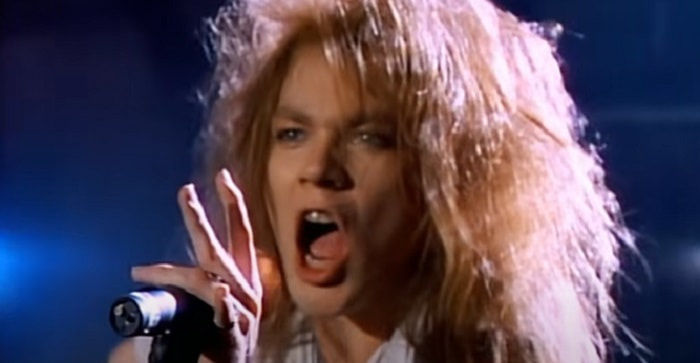
That year, Sky News reported the album's worldwide sales to be approximately 28 million copies, making it one of the best-selling albums of all time. More recent figures have it at approximately 30 million sold worldwide.
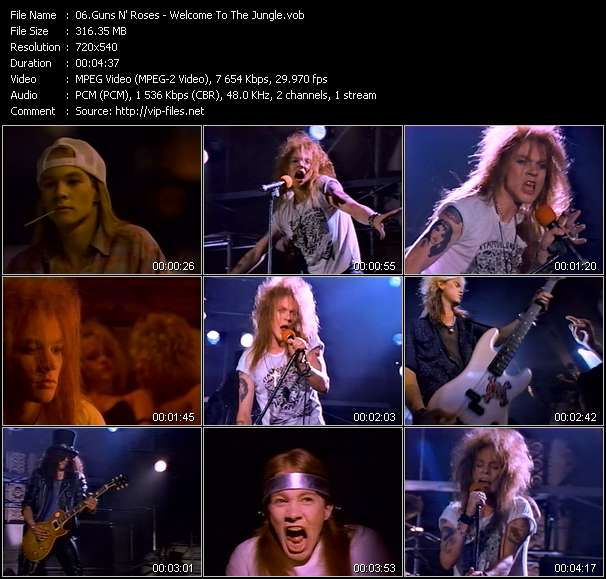
The Singles:
Mr. Brownstone:
"Mr. Brownstone" was the first Guns N' Roses single released outside of the United States and appeared as the A-side of "It's So Easy" in the United Kingdom. In the US, it was used as the B-side of "Welcome to the Jungle". Guitarists Slash and Izzy Stradlin wrote the tune while they were sitting around Stradlin's apartment complaining about their addictions to heroin, for which "Brownstone" is a slang term.

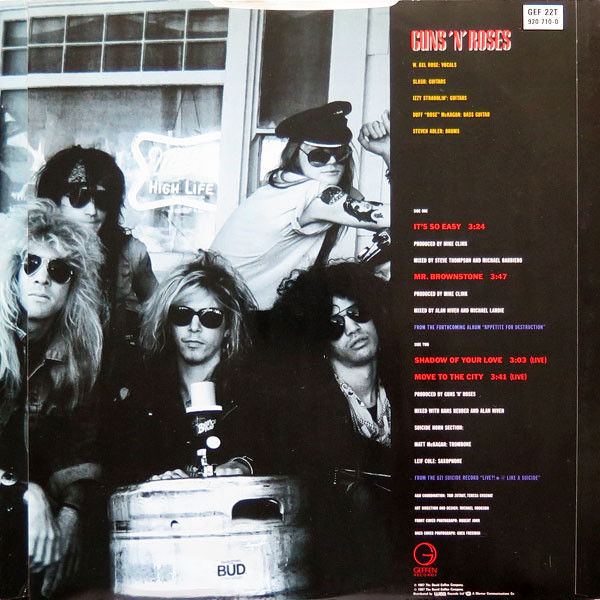
(𝟷𝟿𝟾𝟽 𝚄𝙺 𝚛𝚎𝚕𝚎𝚊𝚜𝚎)
The lyrics make a clear reference to the tolerance that the drug causes: "I used to do a little, but a little wouldn't do it, so the little got more and more." They wrote the lyrics on the back of a grocery bag and brought it to Axl Rose. Slash said the lyrics describe a typical day in the life of Slash and Stradlin. He also states that it was the first song the band wrote after being signed by Geffen Records.
It’s So Easy:
"It's So Easy" was released as the band's first single on June 15, 1987, in the UK, where it reached No. 84 on the UK Singles Chart as a double A-Side with "Mr. Brownstone". It was also released as a maxi-single in Germany later in the same year.
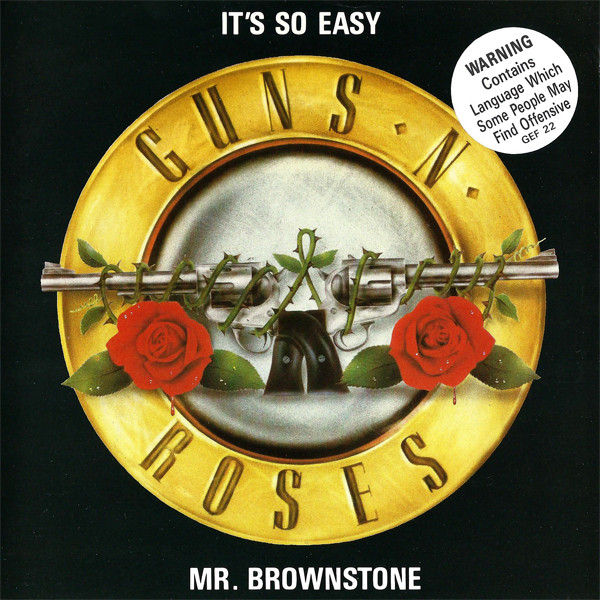
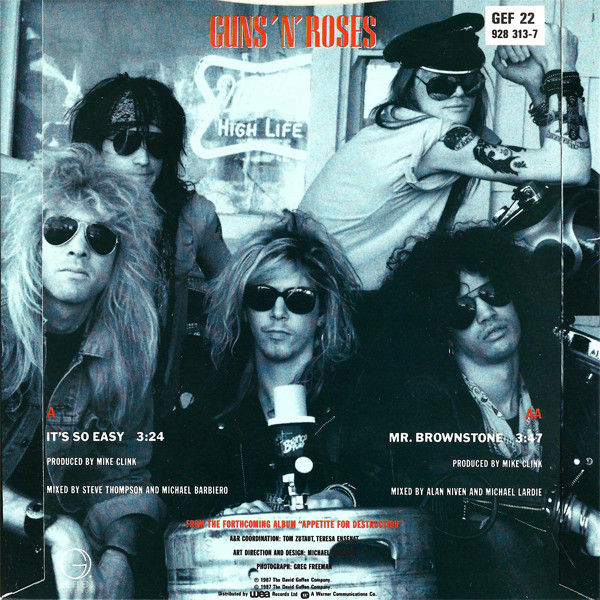
(𝟷𝟿𝟾𝟽 𝚄𝙺 𝚛𝚎𝚕𝚎𝚊𝚜𝚎)
According to an interview published in Hit Parader in March 1988, "It's So Easy" is "an account of a time Duff McKagan and West Arkeen, and also the rest of the band, were kinda going through. They didn't have money, but they had a lot of hangers on and girls [they] could basically live off of ... things were just too easy. There's an emptiness; it's so easy."
In an Eddie Trunk interview from 2006, Axl Rose said that McKagan and Arkeen originally wrote the song as an acoustic "Hippie Ya-Ya" song, and that it was Slash's decision to turn it into a rock song. McKagan stated that Arkeen taught him about alternate tuning, leading the song to have a more distinctive sound, saying "without open-E tuning, that song wouldn't have happened", that's why West has songwriting credit on it."
"It's So Easy" is one of the band's live staples, performed early in a typical setlist at almost every live performance since 1986. The song was the band's regular show opener after the release of "Appetite for Destruction" in 1987 and was a frequent opener during the "Use Your Illusion Tour" in 1991–1993. The song opened every show on the "Not in This Lifetime... Tour."
Slash's post-Guns N' Roses project, Slash's Snakepit, performed the song during their tour in support of "Ain't Life Grand" in 2001.
Duff McKagan, the song's primary songwriter, performed the song in most of his post-Guns N' Roses projects, including the tour in support of his 1993 album "Believe in Me". His band, Loaded, have been performing the song since their inception in 1999.
Velvet Revolver, which included Guns N' Roses members Slash, Duff McKagan, and "Use Your Illusion"-era drummer Matt Sorum, frequently performed the song during live performance with Scott Weiland on vocals.
On October 10, 1989, over two years after the release of the original single, a promo video was made for "It's So Easy". The video features the band playing live in front of a crowd on stage at the Cathouse nightclub in Hollywood, and a cameo by Axl Rose's then-fiancé Erin Everly who is been treated by him in a BDSM-style way. A heavily edited version of the video was later made for promotional purposes. It was not included on the band's "Welcome to the Videos" DVD, and as such its content is rare and can only be found on the internet. At the time the video was released, Guns N' Roses were not as popular as they would eventually become, the single was never released in the United States and its video was never accepted by MTV.
The video was finally released on May 28, 2018.
Welcome to the Jungle:
"Welcome to the Jungle" was released as the album's second single from their debut album, "Appetite for Destruction". It was initially released in the UK in September 1987, then again in October 1988, this time including the US, where it reached No. 7 on the Billboard Hot 100 and No. 24 on the UK Singles Chart.
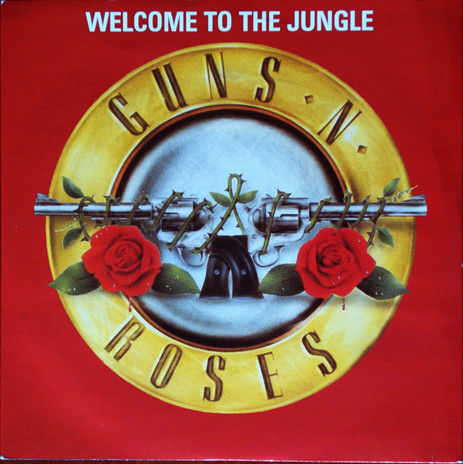
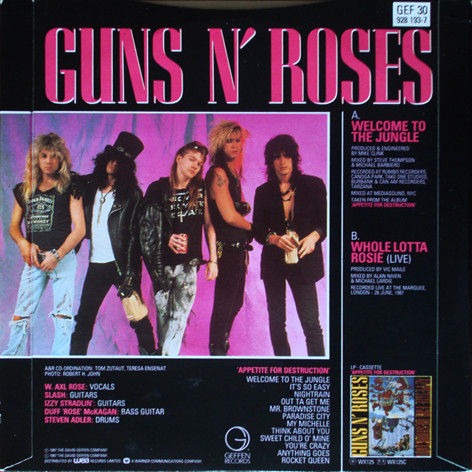
(𝟷𝟿𝟾𝟽 𝚄𝙺 𝚛𝚎𝚕𝚎𝚊𝚜𝚎)
Axl Rose wrote the lyrics while visiting a friend in Seattle:
"It's a big city, but at the same time, it's still a small city compared to L.A. and the things that you're gonna learn. It seemed a lot more rural up there. I just wrote how it looked to me. If someone comes to town and they want to find something, they can find whatever they want."
Guitarist Izzy Stradlin summarizes the song as "about Hollywood streets; true to life".
Slash describes the development of the music in his self-titled autobiography. As the band was trying to write new material, Rose remembered a riff Slash had played while he was living in the basement of Slash's mother's house. He played it and the band quickly laid down the foundations for the song, as Slash continued coming up with new guitar parts. "It was really the first thing we all collaborated on…" the guitarist recalled. "In that whole 'discovering ourselves' period from '85 through '86 – when we were living together very haphazardly and getting together and jamming – there was something going on that not a lot of people had. And this song just had this natural feel that was very cool."
The breakdown was based on a song called "The Fake" that Duff McKagan wrote in 1978 for his punk band the Vains. The bassist said it was the first song he ever wrote, and that it was later released as a single by that band.
According to Slash, the song was written in approximately three hours.
Rose claimed the lyrics were inspired by an encounter he and a friend (purportedly Izzy) had with a homeless man while they were coming out of a bus into New York. Trying to put a scare into the young runaways, the man yelled at them, "You know where you are? You're in the jungle baby; you're gonna die!" "It was a very telling lyric – just the stark honesty of it," said Slash. "If you lived in Los Angeles – and lived in the trenches, so to speak – you could relate to it."
Geffen Records was having a hard time selling the video to MTV. David Geffen made a deal with the network, and the video was aired only one time around 5:00AM on a Sunday morning. As soon as the video was aired, the networks received numerous calls from people wanting to see the video again.
In spite of the early morning airtime, the song's music video caught viewers' attention and quickly became MTV's most requested video. The video in question (directed by Nigel Dick) begins with a shot of Axl Rose disembarking a bus in Los Angeles and a drug dealer (portrayed by Izzy) is seen trying to sell his merchandise while Rose rejects it. As Rose stops to watch a television through a store window, clips of the band playing live can be seen and Slash can also be seen briefly, sitting against the store's wall and drinking from a clear glass bottle in a brown paper bag. By the end of the video, Rose has transformed into a city punk, wearing the appropriate clothing, after going through a process similar to the Ludovico technique.
During an interview with Rolling Stone magazine about the music video, Guns N' Roses' manager at the time, Alan Niven, said that he "came up with the idea of stealing from three movies: Midnight Cowboy, The Man Who Fell to Earth and A Clockwork Orange."
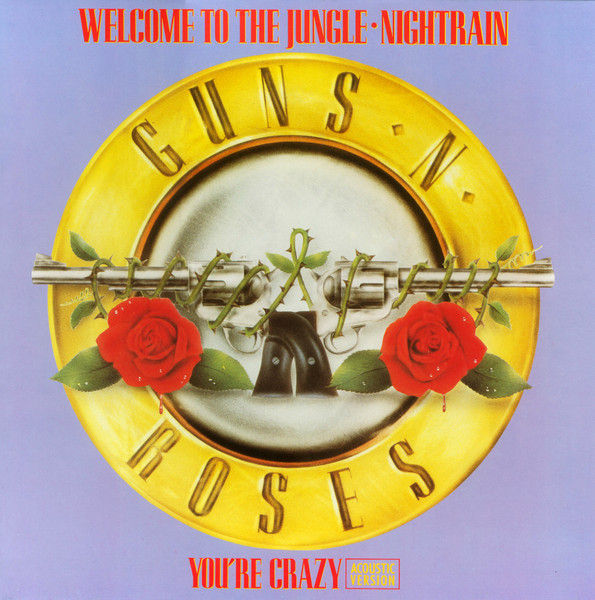
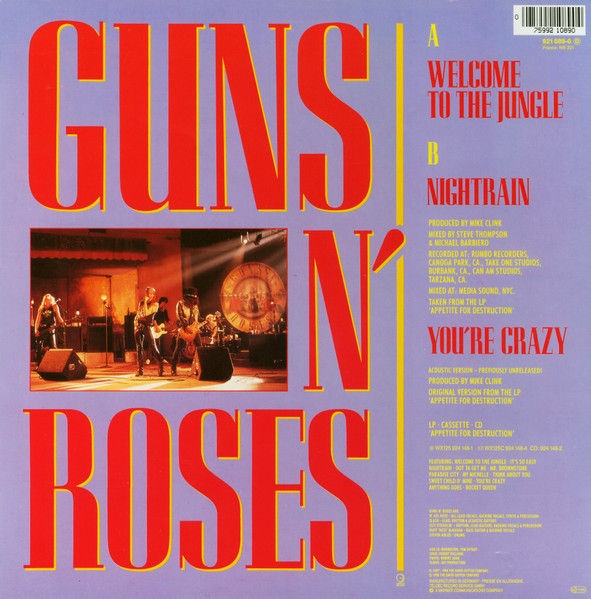
(𝟷𝟿𝟾𝟾 𝚄𝚂 𝚛𝚎𝚕𝚎𝚊𝚜𝚎)
Sweet Child o’ Mine:
"Sweet Child o' Mine" was released in June 1988 as the album's third single in the United States, topping the Billboard Hot 100 chart and becoming the band's only US No. 1 single. In the United Kingdom, the song was released in August 1988, reaching No. 24 on the UK Singles Chart the same month. Re-released there in May 1989, it peaked at No. 6.
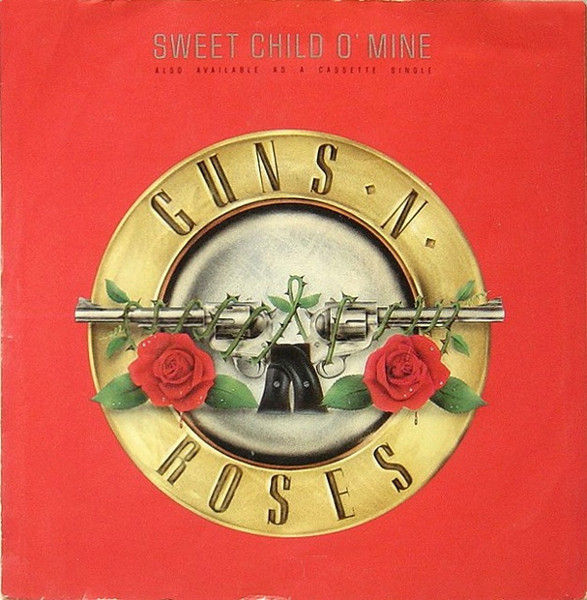
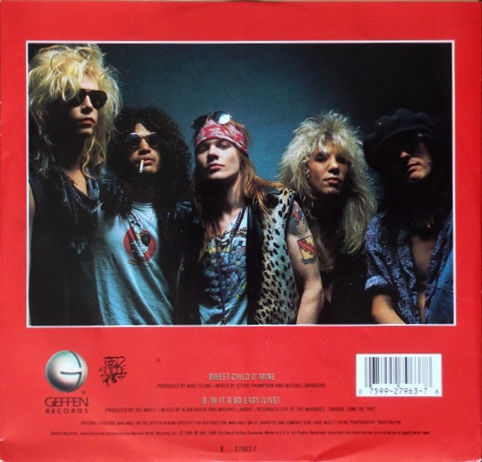
(𝟷𝟿𝟾𝟾 𝚄𝚂 𝚛𝚎𝚕𝚎𝚊𝚜𝚎)
During a jam session at the band's house in the Sunset Strip, drummer Steven Adler and Slash were warming up and Slash began to play a "circus" melody while making faces at Adler. Rhythm guitarist Izzy Stradlin asked Slash to play it again. Stradlin came up with some chords, Duff McKagan created a bassline and Adler planned a beat. In his autobiography, Slash said "within an hour my guitar exercise had become something else.” Lead singer Axl Rose was listening to the musicians upstairs in his room and was inspired to write lyrics, which he completed by the following afternoon. He based it on his girlfriend Erin Everly (daughter of Don Everly and Venetia Stevenson), and declared that Lynyrd Skynyrd served as an inspiration "to make sure that we'd got that heartfelt feeling.” On the next composing session in Burbank, the band added a bridge and a guitar solo.
When the band recorded demos with producer Spencer Proffer, he suggested adding a breakdown at the song's end. The musicians agreed, but were not sure what to do. Listening to the demo in a loop, Rose started saying to himself, "Where do we go? Where do we go now?" and Proffer suggested that he sing that. An alternate version featuring half a live version, half a newly recorded 1999 version plays during the credits of the movie Big Daddy.
The "Sweet Child o' Mine" video depicts the band rehearsing in Mendiola's Ballroom at Huntington Park, surrounded by crew members. All of the band members' girlfriends at the time were shown in the clip: Rose's girlfriend Erin Everly, daughter of Don Everly of the Everly Brothers; McKagan's girlfriend Mandy Brix, from the all-female rock band the Lame Flames; Stradlin's girlfriend Angela Nicoletti; Adler's girlfriend Cheryl Swiderski; and Slash's girlfriend Sally McLaughlin. Stradlin's dog was also shown. The video was successful on MTV, and helped launch the song to success on mainstream radio.
To make "Sweet Child o' Mine" more marketable to MTV and radio stations, the song was edited down from 5:56 to 4:13, for the radio edit/remix, with much of Slash's guitar solo removed. This drew the ire of the band, including Rose, who commented on it in a 1989 interview with Rolling Stone:
"I hate the edit of 'Sweet Child O' Mine.' Radio stations said, 'Well, your vocals aren't cut.' My favorite part of the song is Slash's slow solo; it's the heaviest part for me. There's no reason for it to be missing except to create more space for commercials, so the radio-station owners can get more advertising dollars. When you get the chopped version of 'Paradise City' or half of 'Sweet Child' and 'Patience' cut, you're getting screwed."
A 7-inch vinyl format and cassette single were released. The album version of the song was included on the US single release, while the UK single was the "edit/remix" version. The 12-inch vinyl format also contained the longer LP version. The B-side to the single is a non-album, live version of "It's So Easy.”
On an interview on Eddie Trunk's New York radio show in May 2006, Rose stated that his original concept for the video focused on the theme of drug trafficking. According to Rose, the video was to depict an Asian woman carrying a baby into a foreign land, only to discover at the end that the child was dead and filled with heroin. This concept was rejected by Geffen Records.
This song was used for a teaser trailer premiere of Thor: Love and Thunder, which released on April 18, 2022, and the film itself, including the end credits.
In 2015, the web page of the Australian music TV channel MAX published an article by music writer Nathan Jolly that noted similarities between "Sweet Child o' Mine" and the song "Unpublished Critics" by the Australian band Australian Crawl, from 1981. The article included both songs, inviting readers to compare the two. It also cited a reader's comment on an earlier article that had originally drawn attention to the similarities between the songs.
As of May 2015, this comment no longer appeared on the earlier article. The story went viral quickly, encouraging several comments on both the MAX article and the suggestion that "Unpublished Critics" had influenced "Sweet Child o' Mine,” including one from Duff McKagan, bass player with Guns N' Roses when "Sweet Child o' Mine" was written and recorded. McKagan found the similarities between the songs "stunning," but said he had not previously heard "Unpublished Critics."
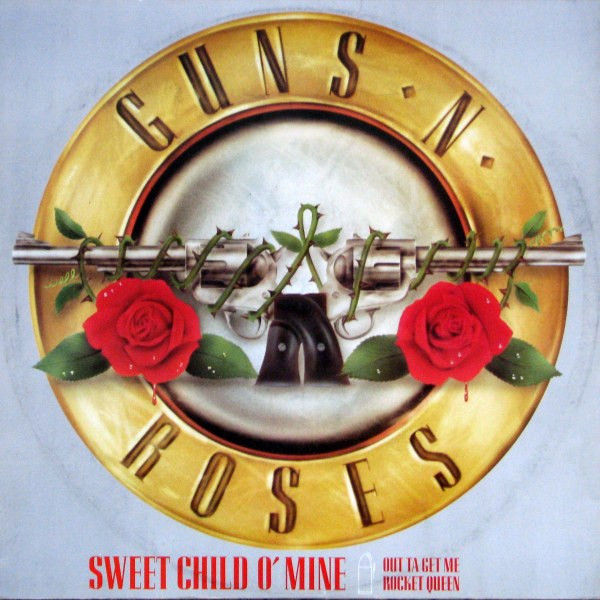
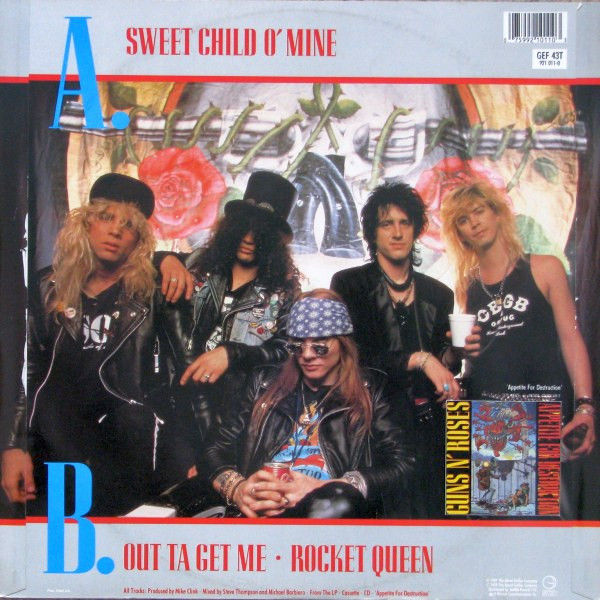
(𝟷𝟿𝟾𝟾 𝚄𝙺 𝚛𝚎𝚕𝚎𝚊𝚜𝚎)
Paradise City:
“Paradise City" was released as a single in January 1989, it is the only song on the album to feature a synthesizer. The song peaked at No. 5 on the Billboard Hot 100—becoming the band's third single to reach the top 10—and No. 6 on the UK Singles Chart. It also topped the Irish Singles Chart, their first of three singles to do so.
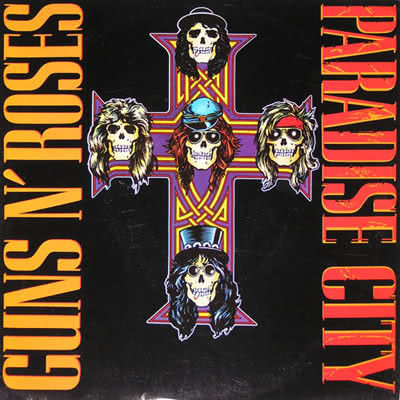
(𝟷𝟿𝟾𝟿 𝚄𝚂 𝚛𝚎𝚕𝚎𝚊𝚜𝚎)
Guns N' Roses' lead guitarist, Slash, states that the song was written in the back of a rental van as they were on their way back from playing a gig in San Francisco with the band Rock N Riders. He says that the band was drinking and playing acoustic guitars, when he came up with the intro. Duff McKagan and Izzy Stradlin started playing along. Slash started humming a melody when Axl Rose sang, "Take me down to the Paradise City." Slash chimed in with "Where the grass is green and the girls are pretty." Rose sang the first line again, where Slash shouted out "Where the girls are fat and they've got big titties." Rose finished with "Take ... me ... home!" Slash preferred his second line but the rest of the band felt differently. He was outvoted and they used the first line. The band then expanded upon the rest of the lyrics in rounds. Finally, Slash wrapped up by coming up with the heavy riff that drives the song.
During a 1988 interview, Rose told Hit Parader magazine that "the verses are more about being in the jungle; the chorus is like being back in the Midwest or somewhere."
This song was often used as the band's show-closing song during the Appetite for Destruction Tour, Use Your Illusion Tour and Chinese Democracy Tour.
In the last two minutes of the song, it changes to double-time and the chorus is repeated several times while Slash plays a guitar solo in the background.
Guitarist Andy McCoy has said that the song is copied from several riffs written by his band, Hanoi Rocks. He has said that the chorus is just a slower version of the riff in "Lost in the City". Axl Rose has often cited Hanoi Rocks as Guns N' Roses' biggest influence. Hanoi Rocks' original rhythm guitarist Nasty Suicide can also be seen in the music video for "Paradise City." The style of the main riff of "Paradise City" (involving an ascending chromatic riff) has also been used by many former Guns N' Roses members in new projects. This can be seen in Izzy Stradlin's "Bomb" and Velvet Revolver's "Do It for the Kids". According to Tracii Guns of L.A. Guns and former member of Guns N' Roses, the riff was influenced by the Black Sabbath song "Zero the Hero" from the "Born Again" album.
Musically, the song has been described as Glam Metal, Hard Rock, and Heavy Metal.
The song ranked number 21 on VH1's 40 Greatest Metal Songs of All Time. It ranked number 459 on Rolling Stone's 2010 list of "The 500 Greatest Songs of All Time."
Some publications, such as Ultimate Classic Rock and Spin, have identified the song as one of the band's worst. The latter designating it as the most overrated in their catalogue, writing "'Paradise City' runs out of ideas halfway through its triumphant first refrain and yet still lasts for six more minutes."
During live Guns N' Roses shows, "Paradise City" is usually performed last, as an encore. This has been a tradition since at least 1988, up to their latest tour. They also performed the song live at the Freddie Mercury tribute concert in 1992 (this time it was the first song of their short set).
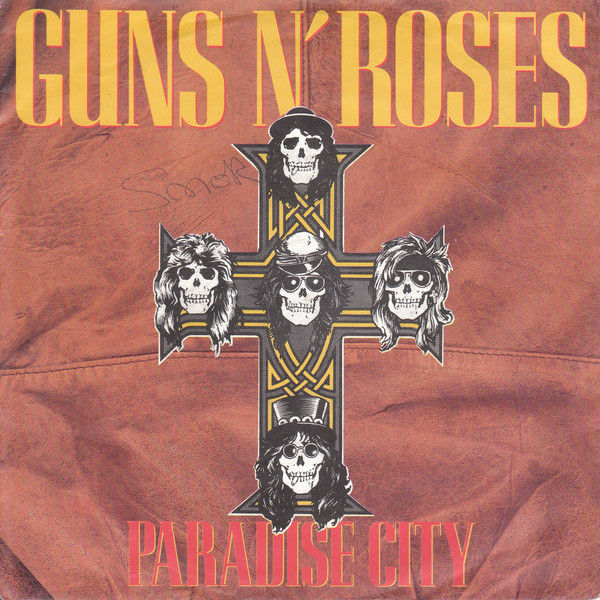
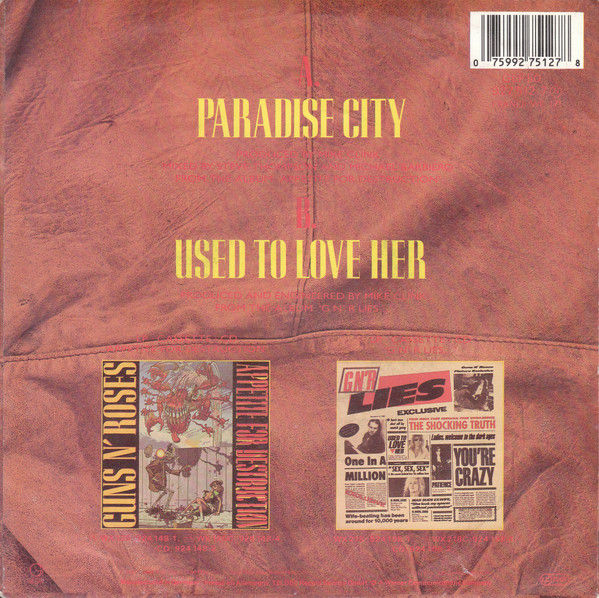
(𝟷𝟿𝟾𝟿 𝚄𝙺 𝚟𝚎𝚛𝚜𝚒𝚘𝚗 𝚝𝚘 𝚌𝚘𝚒𝚗𝚌𝚒𝚍𝚎 𝚠𝚒𝚝𝚑 𝚝𝚑𝚎 𝚛𝚎𝚕𝚎𝚊𝚜𝚎 𝚘𝚏 𝙶 𝚗‘ 𝚁 𝙻𝚒𝚎𝚜)
Nightrain:
"Nightrain" is the third song on the band's debut studio album, "Appetite for Destruction" (1987), and was released as the album's fifth and final single, reaching number 93 on the US Billboard Hot 100 chart. The song was ranked eighth on Guitar World's list of the "Top 10 Drinking Songs". The track was not included on Guns N' Roses' 2004 Greatest Hits album.
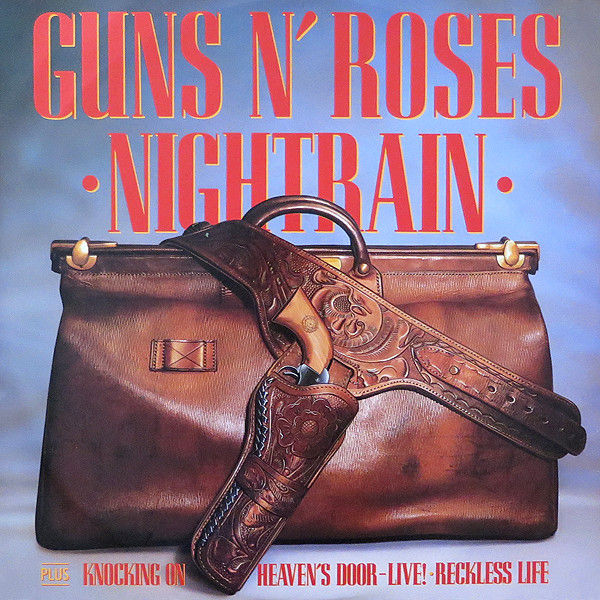
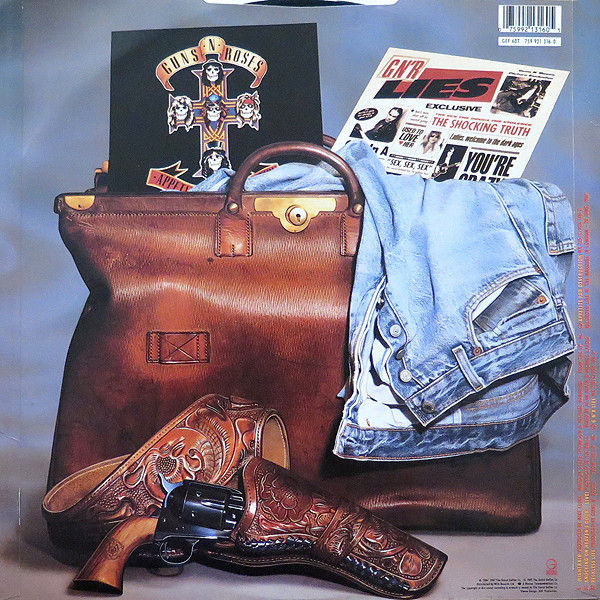
(𝟷𝟿𝟾𝟿 𝚄𝙺 𝚟𝚎𝚛𝚜𝚒𝚘𝚗, 𝚊𝚕𝚜𝚘 𝚝𝚘 𝚌𝚘𝚒𝚗𝚌𝚒𝚍𝚎 𝚠𝚒𝚝𝚑 𝚝𝚑𝚎 𝚛𝚎𝚕𝚎𝚊𝚜𝚎 𝚘𝚏 𝙶 𝚗‘ 𝚁 𝙻𝚒𝚎𝚜)
The song is a tribute to an infamous brand of cheap Californian fortified wine, Night Train Express, which was extremely popular with the band during their early days because of its low price and high alcohol content. The title is spelled differently, omitting a T and removing the space, making a portmanteau of the two words.
Slash describes "Nightrain" as "an anthem that we came up with on the spot". The original idea for the song came when Slash and Izzy Stradlin wrote the main riff while they were sitting on the floor of the band's practice room. The next day, Slash was ill so Stradlin finished writing the music with Duff McKagan. However they did not write any lyrics. The song remained incomplete until one night when the band was walking down Palm Avenue sharing a bottle of Night Train. Someone yelled 'I'm on the night train!' and the whole band joined in, with Axl Rose improvising the lines in between: "Bottoms up!" "Fill my cup!" etc. After this initial inspiration, the band finished the song within a day. According to the autobiography of Paul Stanley from Kiss, the pre-chorus of the song used to be the actual chorus until Rose let Stanley hear a demo of the song and advised Rose to use the chorus as the pre-chorus.
The first half of the first guitar solo and the lead intro is played by Izzy Stradlin, while all other lead guitar parts are played by Slash.
"Nightrain" is a staple at Guns N' Roses concerts. In earlier shows, it was usually played early in the set. During the Chinese Democracy Tour, it is usually played as the last song before the encore, or during the encore. In some shows in late 2006, Izzy Stradlin, former rhythm guitarist and co-founder of Guns N' Roses, joined the band for "Nightrain" and other songs.
Slash describes in his autobiography how "Nightrain" is his favorite song to perform live:
"That song has a rhythm to it in the verses that from the start always made me go crazy. The first time we played it, even, I started jumping up and down - I couldn't help it. When we had our huge stage later on, I'd run the length of it, jump off the amplifiers, and lose it just about every single time we played it. I'm not sure why, but no other song we've ever played live made me move like that."
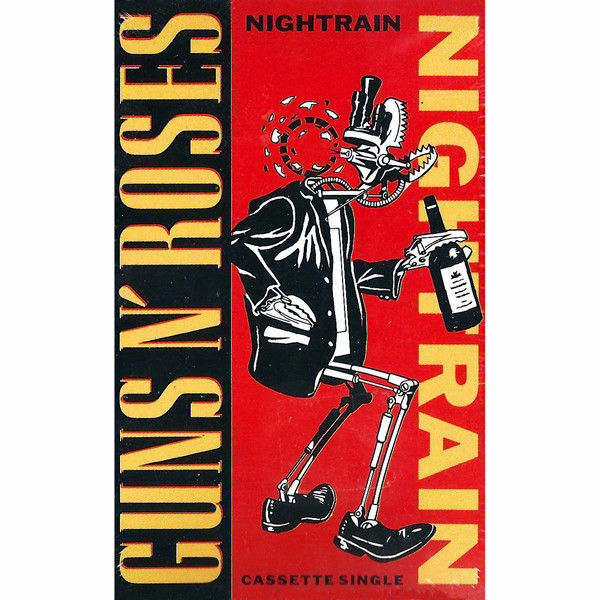
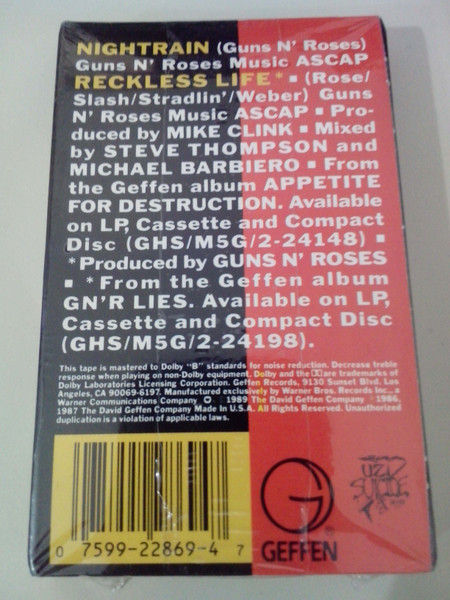
(𝟷𝟿𝟾𝟿 𝚄𝚂 𝚌𝚊𝚜𝚜𝚎𝚝𝚝𝚎 𝚜𝚒𝚗𝚐𝚕𝚎, 𝚊𝚕𝚜𝚘 𝚛𝚎𝚕𝚎𝚊𝚜𝚎𝚍 𝚝𝚘 𝚌𝚘𝚒𝚗𝚌𝚒𝚍𝚎 𝚠𝚒𝚝𝚑 𝚝𝚑𝚎 𝚙𝚛𝚘𝚖𝚘𝚝𝚒𝚘𝚗 𝚘𝚏 𝙶 𝚗‘ 𝚁 𝙻𝚒𝚎𝚜)
Critical Reception & Album Legacy:
“Appetite for Destruction” was not well received by contemporary critics. Many complained that its massive success with consumers was fostered by the taboo of "Sex, Drugs and Rock & Roll" during the 1980s, when much of the cultural atmosphere in the US became informed by the Reagan-Bush Administration, the AIDS crisis, and the popularity of MTV.

Reviewing in 1987, Dave Ling from Metal Hammer dismissed the album as an inferior mix of elements from bands such as Aerosmith, Hanoi Rocks, and AC/DC.
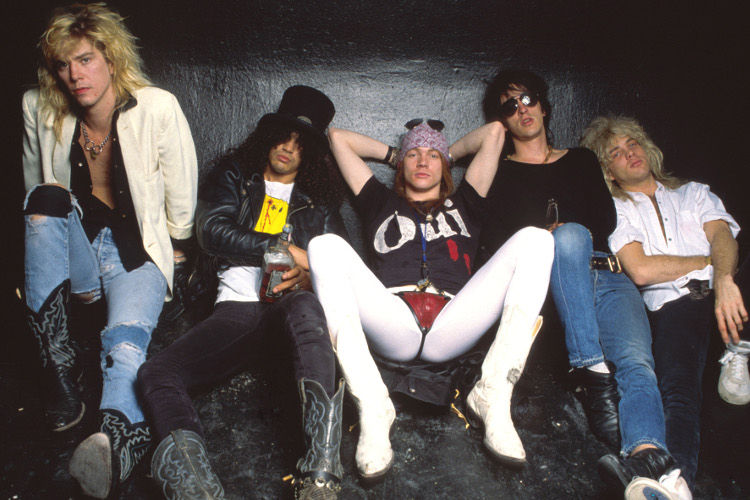
Critics in England were more positive; Kerrang! claimed that "Rock is at last being wrestled from the hands of the bland, the weak, the jaded, the tired, the worn, and being thrust back into the hands of the real raunch rebels."

It was voted the 26th best album of the year in The Village Voice's 1988 Pazz & Jop, an annual poll of American critics nationwide.
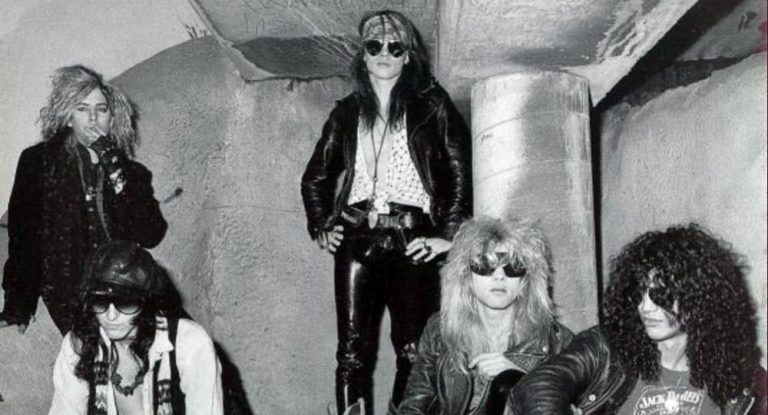
Robert Christgau, the poll's supervisor, was qualified in his praise while reviewing the album for his 1990 book “Christgau's Record Guide: The '80s”. While applauding Rose's "effortless, convincing vocal abilities" as "undeniable and [setting] him apart from his contemporaries", the journalist found his performance undermined by questionable lyrics that reveal darker ideas:
"He doesn't love 'Night Train', he loves alcoholism. And once that sweet child o' his proves her devotion by sucking his cock for the portacam, the evil slut is ready for 'See me hit you, you fall down.'"

In a retrospective review for The Rolling Stone Album Guide (2004), Ann Powers wrote that Guns N' Roses "produced a unique mix of different rock values", such as "speed and musicianship, flash and dirt", on an album that "changed Hard Rock's sensibilities at the time."
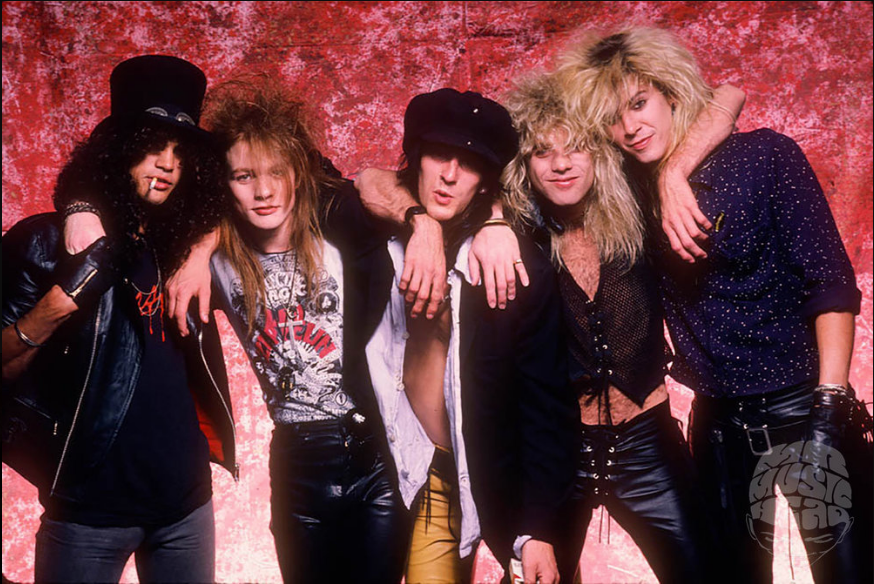
Stephen Thomas Erlewine also viewed it as a "turning point for Hard Rock" in his review for AllMusic and felt Rose's singing and songwriting are enhanced by Slash and Stradlin's dual guitar playing, which helped make “Appetite for Destruction” "the best Metal record of the late '80s".

According to Jimmy Martin of The Quietus, as "the 1980s' best Hard Rock" album, “Appetite for Destruction” had an "unrefined, Punk quality" that marked a "shift away" from Hair Metal bands commercialized by MTV.
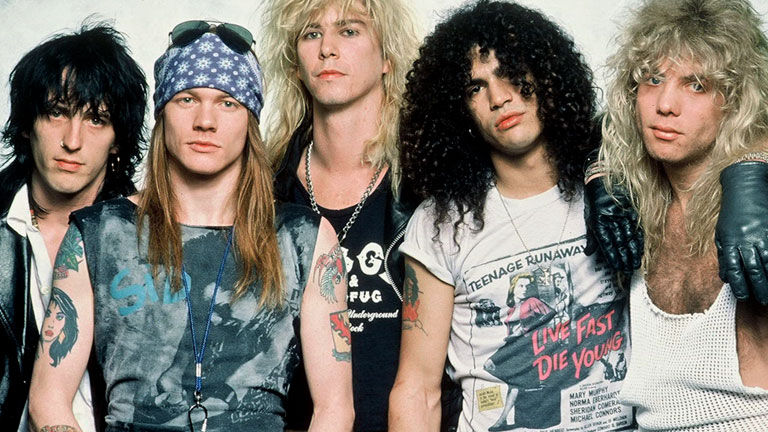
According to Billboard magazine's Christa Titus, “Appetite for Destruction” appealed to Rock music's various listeners because the band incorporated "Metal's forceful playing, Punk Rock's rebellious themes, Glam Metal's aesthetic, and Bluesy guitar riffs that appealed to purists."
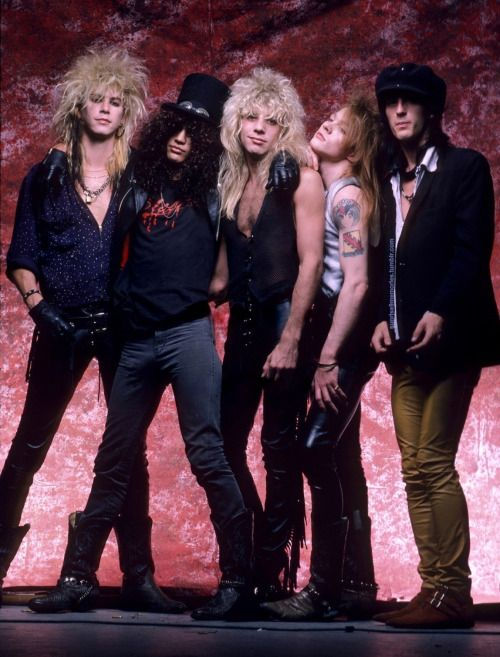
Russell Hall, the features writer for Gibson's online publication, said the album "injected a much-needed dose of ’70s-style rebellion into the frothy Pop Metal of the '80s", by "combining the swagger of late '60s Stones and vintage Aerosmith with the menace of Punk and a Trash-Glam aesthetic".

Writing for Pitchfork, Maura Johnston called the album "a watershed moment in '80s Rock that chronicled every vice of Los Angeles led by the lye-voiced Axl Rose and a legendary, switchblade-sharp band."
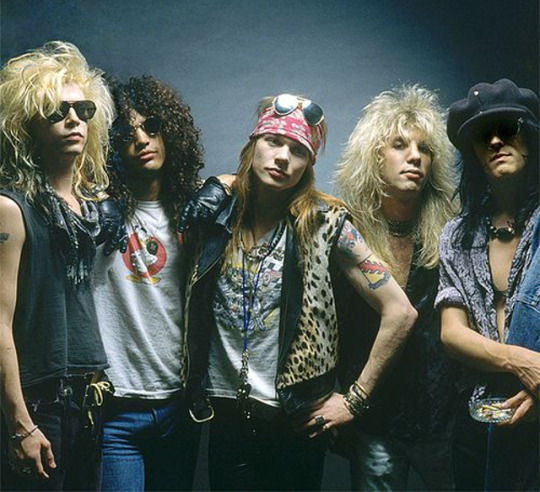
BBC Music's Dennis O'Dell said the engagingly hedonistic album remains the band's best, as did Ric Albano of Classic Rock Magazine:
"This band would never again reach this level of importance and breakthrough originality."

In a 2000 list, Q named it one of the greatest Metal albums ever and hailed it as "a riotous celebration of Sex, Drugs and Rock 'N' Roll".

Chuck Klosterman said it would be the only Pop Metal album to make a theoretical list of "Rock's ten best albums" and Chuck Eddy named it one of his essential Hair Metal records; it was "the greatest album ever made about how you can't run away from yourself", he wrote in SPIN.

On the other hand, Sputnikmusic believed the album has been somewhat overrated and that most of the songs suffer by comparison with the highlights "Welcome to the Jungle", "Sweet Child O' Mine", "Paradise City", "Mr. Brownstone", and "Rocket Queen".
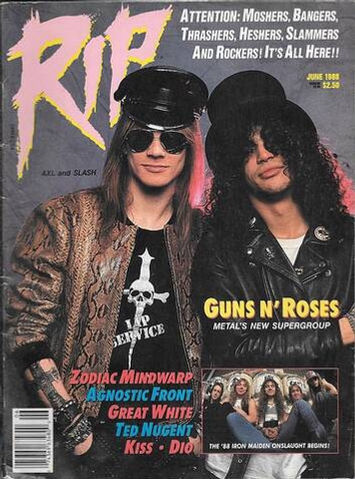
In 1999, Rose had the album re-recorded with the then current lineup (Rose, Robin Finck, Tommy Stinson, Paul Tobias, Josh Freese, Dizzy Reed & Chris Pitman) to "spruce up" the album with new recording techniques. The re-recorded version of the album was never released, although an edited clip of "Sweet Child O' Mine" featuring the second half of the song using the re-recorded version was included over the credits of the movie Big Daddy in 1999.

Noteworthy:
The band's first show together inspired "Paradise City."
Slash and Adler were the last to join GN'R in 1985 after their original guitarist Tracii Guns and drummer Rob Gardner quit just days before their first show in Seattle. On the way up from Los Angeles, the vehicle broke down and they had to hitch hike the rest of the way, leaving most of their gear behind.
They were only paid a fraction of what they had been promised at the one show they played, which was on borrowed amps. They had to surrender their remaining PNW performances and hitch hike back to LA. Fitting enough, the group named this trip the "Hell Tour," and wrote the lyrics to "Paradise City" together as they longed to go home.
Though this became one of the group's biggest hits, Slash preferred his own version of the chorus, "Take me down / To the paradise city / Where the girls are fat / And they've got big ti--ies."
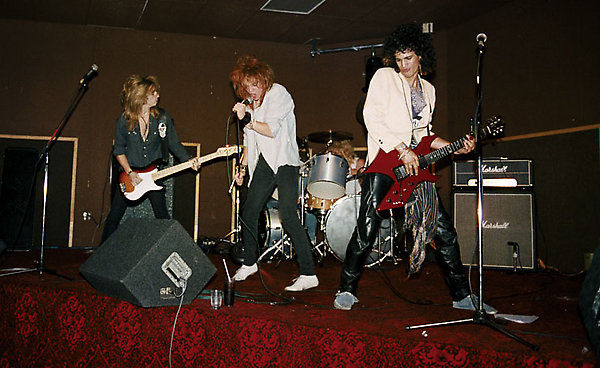
“Rocket Queen" is basically audio porn.
Ever listen to the solo in the middle, but really closely? Those are the sounds of Adriana Smith, who had been dating Adler until she saw him out with another girl. Hoping to get revenge on the drummer, she developed a physical relationship with Rose.
Later when the band was finishing up the mixing for "Appetite" in New York, Rose and Smith went at it again - except this time in the studio, and they recorded it to put in the album's closer. "We cleared everyone out of the studio. Dimly lit, there were cushions in the booth, so no one could really see in. There were two guys in one booth and we were in another and I think they got a couple hours of recording of us having sex," she told the Sunday Mirror a few years ago.

They're out ta get Bill Bailey.

"Out Ta Get Me" is inspired by Rose's long history with authorities. Believe it or not, he had a bit of a troubled past (yes, that was sarcasm). He'd been arrested several times as a minor and became known as one of the most delinquent juveniles in Lafayette, Indiana. Once he turned 18, he knew he had to get out of the town or he'd end up in prison.
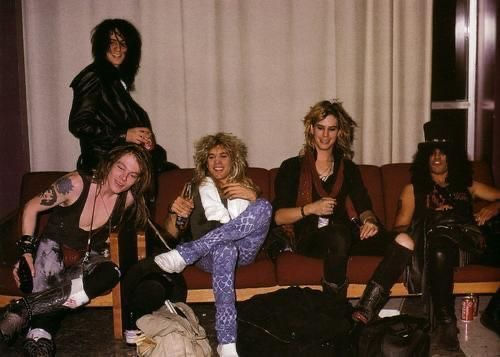
"Anything Goes," was originally written for Hollywood Rose.
Axl Rose wrote "Anything Goes" for one of his earlier bands with Izzy Stradlin and Chris Weber, Hollywood Rose. The lyrics are a bit different and the original version is much slower, but it is featured on Hollywood Rose's demos album The Roots of Guns N' Roses that was released in 2004.
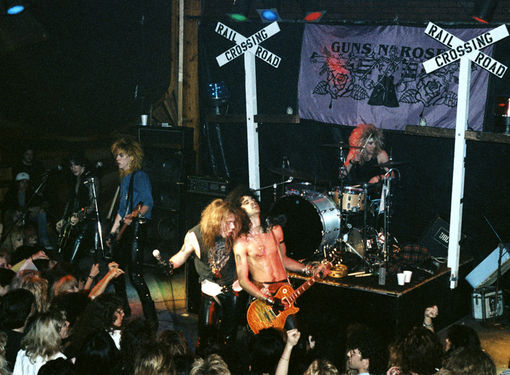
“It's So Easy”...to punch David Bowie in the face.
"It's So Easy" later received a video treatment, though it wouldn't be released in the U.S. until last year. The video features Erin Everly, Rose's first wife (and the inspiration behind "Sweet Child") dressed in bondage. David Bowie, who dated Slash's mom and thus had a relationship with the guitarist, showed up to the video shoot drunk and apparently flirted with Everly.
Rose didn't like that much, and the hot-headed singer apparently threw some blows at Ziggy Stardust and insulted him from the stage during their performance later. They eventually made up, but to think Bowie was once on Rose's shit list is comical.
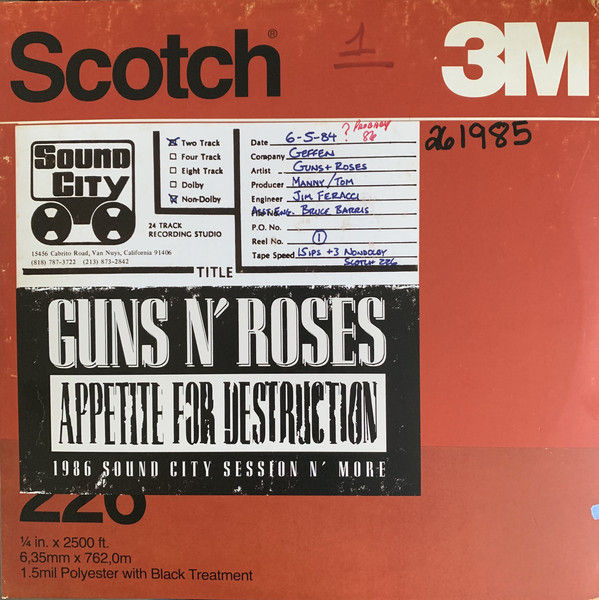
It's the best-selling debut album of all time.
Google it, it's true. The album went on to sell 18 million copies in the U.S. alone, and 30 million worldwide. No other artist in music history sold that many copies of their very first album, so kudos to Guns N' Roses. They top the list with Boston, Hootie & the Blowfish, Whitney Houston and Britney Spears trailing behind.

Album Accolades:
According to Acclaim Music, “Appetite for Destruction” is the “63rd most ranked record on critics' all-time lists”.

• In 1989, Rolling Stone ranked “Appetite for Destruction” as the “27th best album of the 1980s”.
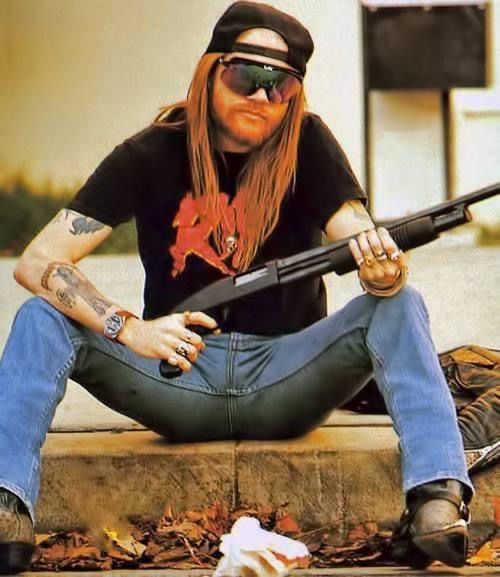
• In 2020 the same magazine later ranked it at sixty-two on their list of the “500 Greatest Albums of All Time”.

• In 2001, Q magazine named “Appetite for Destruction” as one of the “50 Heaviest Albums of All Time”.
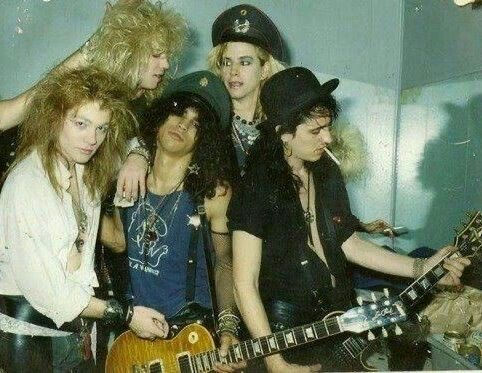
• In 2004, Q magazine also named “Appetite for Destruction” as “one of the greatest Classic rock Albums Ever”.
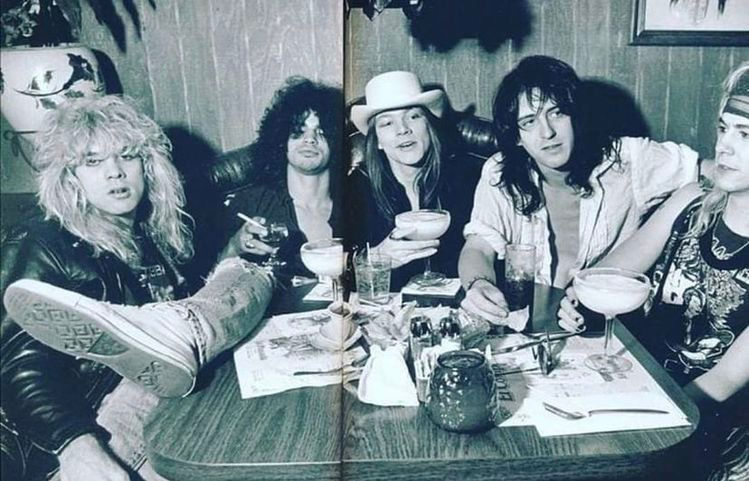
• In 2003, VH1 named “Appetite for Destruction” the “42nd Greatest Album of All Time”.

• In 2002, Pitchfork ranked “Appetite for Destruction” 59th on their "Top 100 Albums of the 1980s". The album dropped to 86th on Pitchfork's 2018 list of the "200 Best Albums of the 1980s".
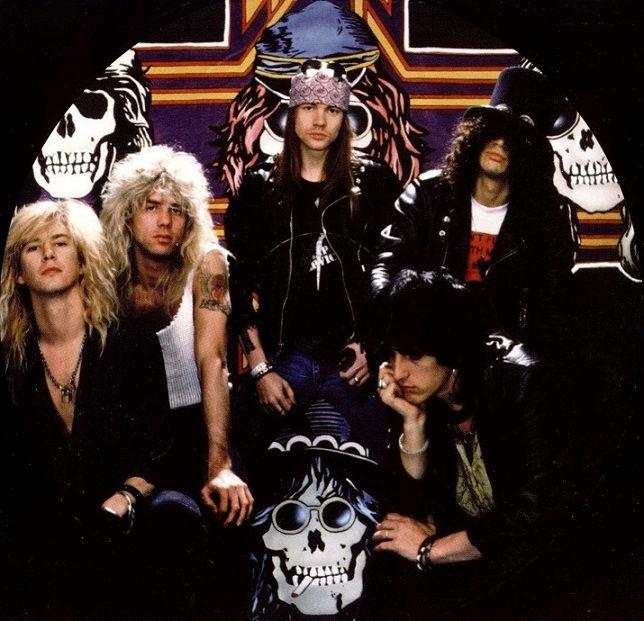
• It was ranked 18 in SPIN magazine's "100 Greatest Albums, 1985–2005".
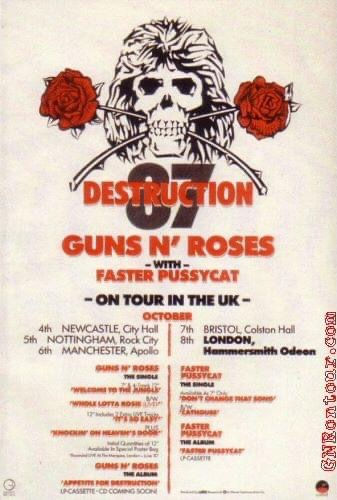
• In 2006, Kerrang! ranked the album No. 1 on the "list of best rock albums".
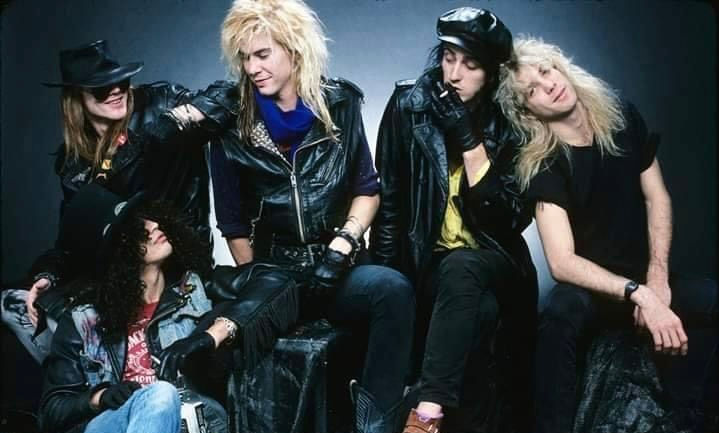
• In 2006, the album was included in the book “1001 Albums You Must Hear Before You Die”.
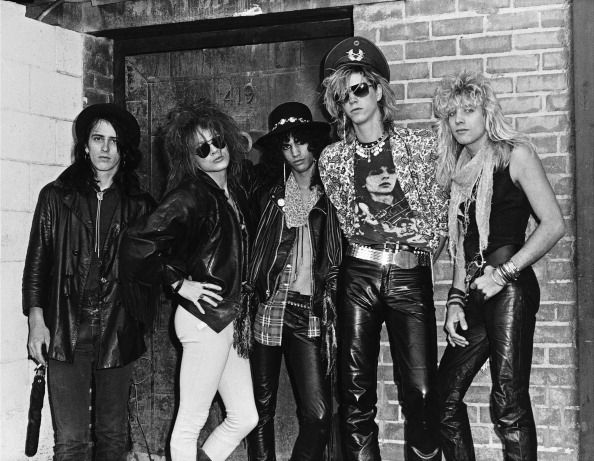
• The album was ranked 32 on Rock Hall of Fame's "definitive 200' album list, developed by the NARM", the National Association of Recording Merchandisers.
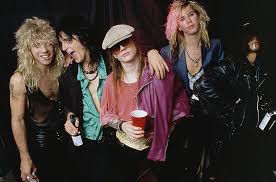
• In 2006, Q magazine placed the album at No. 10 in its list of "40 Best Albums of the '80s".

• In 2006, the album was placed No. 2 on Guitar World magazine's list of the “100 Greatest Guitar Albums of All Time”.

• In 2011, Australian radio station Triple M listed “Appetite for Destruction” No. 1 in their list of the “250 most life changing albums”.

• In 2012, Rolling Stone ranked “Appetite for Destruction” as the “62nd greatest album of all time”.
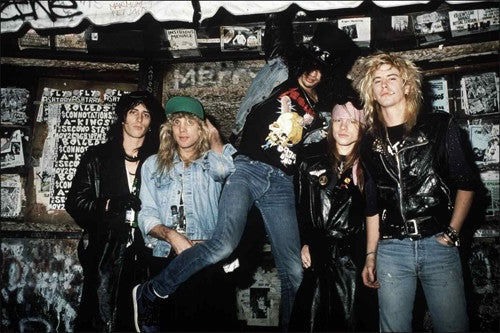
• In 2012, Slant Magazine listed the album at No. 37 on its list of "Best Albums of the 1980s".

• In 2012, Clash Magazine added the album to its “Classic Albums Hall of Fame”.

Links to Artists, Albums, and Music Videos:
▶ Listen to “Appetite for Destruction” via Apple Music: https://music.apple.com/us/album/appetite-for-destruction/1377813284
▶ Listen to “Appetite for Destruction” via Spotify: Appetite For Destruction https://open.spotify.com/album/28yHV3Gdg30AiB8h8em1eW
▶ Watch the official music video for “Welcome to the Jungle”: https://youtu.be/o1tj2zJ2Wvg
▶ Watch the official music video for “Sweet Child O’ Mine”: https://youtu.be/1w7OgIMMRc4
▶ Watch the official music video for “Paradise City”: https://youtu.be/Rbm6GXllBiw
▶ Follow Guns N’ Roses on Facebook: https://www.facebook.com/gunsnroses
▶ Follow Slash on Facebook: https://www.facebook.com/Slash
▶ Follow Duff McKagan on Facebook: https://www.facebook.com/duffmckagan
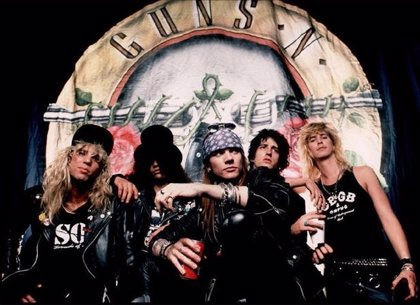
Note: The reviews shared here are for historical reference. The views and opinions expressed within are not always supported (in full or in part) by Into the Wells. — E.N. Wells

Follow Us:
▶ Subscribe to Into the Wells: https://intothewellsabyss.wixsite.com/intothewells
▶ Follow us on Facebook: https://www.facebook.com/Intothewells.abyss
▶ Follow us on Instagram: https://www.instagram.com/into_the_wells
▶ Follow us on Twitter: https://twitter.com/into_the_wells?s=21&t=ISh9VpVYRrOy70MsZZVXTQ

#GunsNRoses #GnFnR #GunsNFuckinRoses#AppetiteForDestruction #WelcometotheJungle #SweetChildOMine #ParadiseCity #MrBrownstone #RocketQueen #ItsSoEasy #NightTrain #OuttaGetMe #ThinkAboutYou #MyMichelle #YoureCrazy #AnythingGoes #Slash #W_AxlRose #AxlRose #DuffMcKagan #DuffRoseMcKagan #IzzyStradlin #StevenAdler #musicpromotion #metalmusic #metalhead #metalmusiclovers #metalcommunity #intothewells #metaldoesntsuck #metal #metalmusic #historyofheavymetal #historyofrockandroll #todayinhardrockhistory







Comments